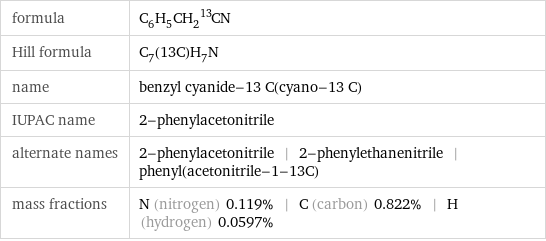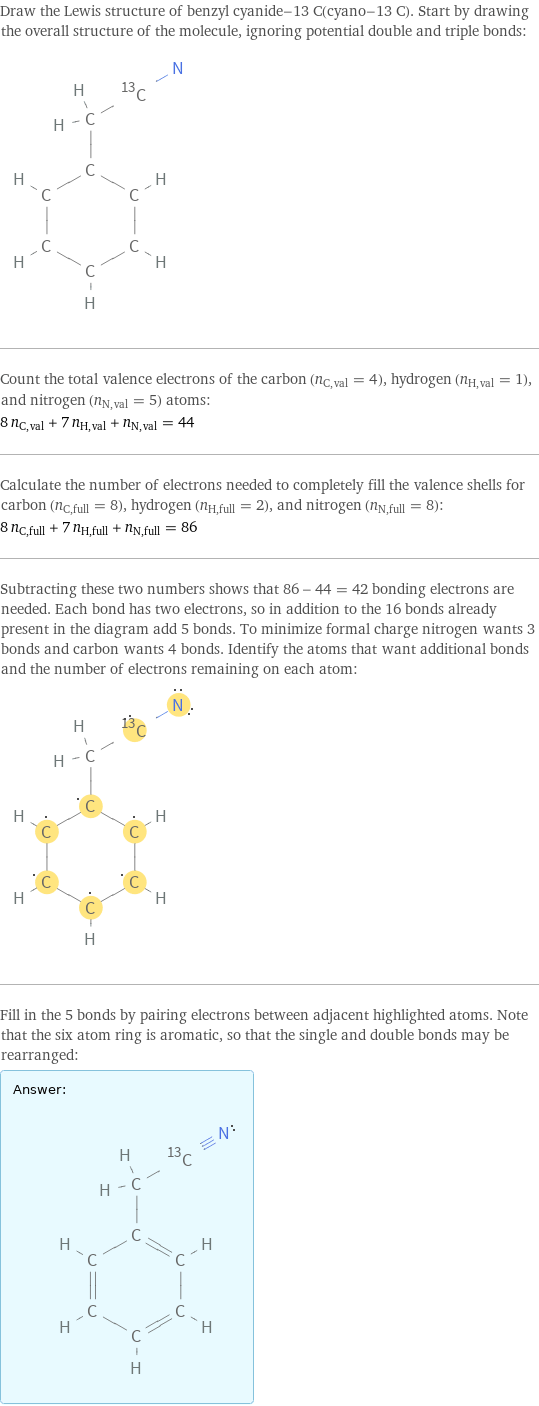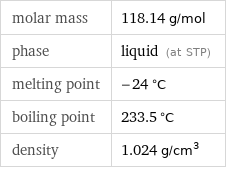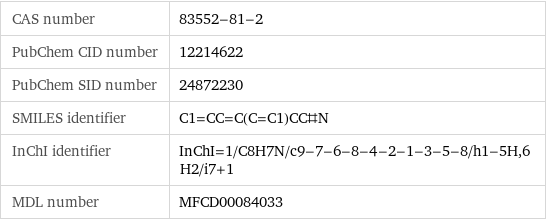Input interpretation

benzyl cyanide-13 C(cyano-13 C)
Chemical names and formulas

formula | C_6H_5CH_2^13CN Hill formula | C_7(13C)H_7N name | benzyl cyanide-13 C(cyano-13 C) IUPAC name | 2-phenylacetonitrile alternate names | 2-phenylacetonitrile | 2-phenylethanenitrile | phenyl(acetonitrile-1-13C) mass fractions | N (nitrogen) 0.119% | C (carbon) 0.822% | H (hydrogen) 0.0597%
Lewis structure

Draw the Lewis structure of benzyl cyanide-13 C(cyano-13 C). Start by drawing the overall structure of the molecule, ignoring potential double and triple bonds: Count the total valence electrons of the carbon (n_C, val = 4), hydrogen (n_H, val = 1), and nitrogen (n_N, val = 5) atoms: 8 n_C, val + 7 n_H, val + n_N, val = 44 Calculate the number of electrons needed to completely fill the valence shells for carbon (n_C, full = 8), hydrogen (n_H, full = 2), and nitrogen (n_N, full = 8): 8 n_C, full + 7 n_H, full + n_N, full = 86 Subtracting these two numbers shows that 86 - 44 = 42 bonding electrons are needed. Each bond has two electrons, so in addition to the 16 bonds already present in the diagram add 5 bonds. To minimize formal charge nitrogen wants 3 bonds and carbon wants 4 bonds. Identify the atoms that want additional bonds and the number of electrons remaining on each atom: Fill in the 5 bonds by pairing electrons between adjacent highlighted atoms. Note that the six atom ring is aromatic, so that the single and double bonds may be rearranged: Answer: | |
Basic properties

molar mass | 118.14 g/mol phase | liquid (at STP) melting point | -24 °C boiling point | 233.5 °C density | 1.024 g/cm^3
Units

Liquid properties (at STP)

density | 1.024 g/cm^3 refractive index | 1.523
Units

Non-standard atom properties

C-13 | 1
Chemical identifiers

CAS number | 83552-81-2 PubChem CID number | 12214622 PubChem SID number | 24872230 SMILES identifier | C1=CC=C(C=C1)CC#N InChI identifier | InChI=1/C8H7N/c9-7-6-8-4-2-1-3-5-8/h1-5H, 6H2/i7+1 MDL number | MFCD00084033
Safety properties

flash point | 101.7 °C